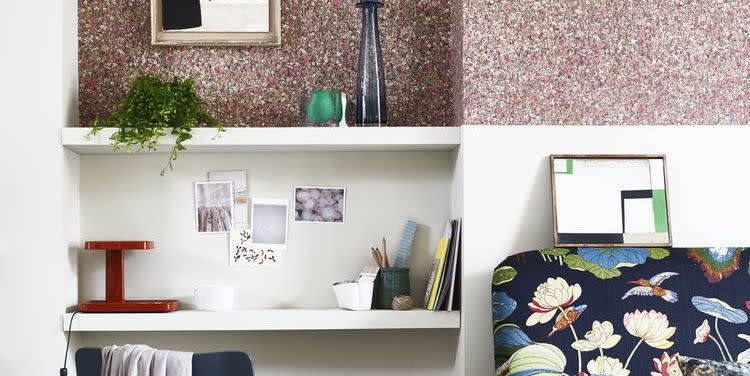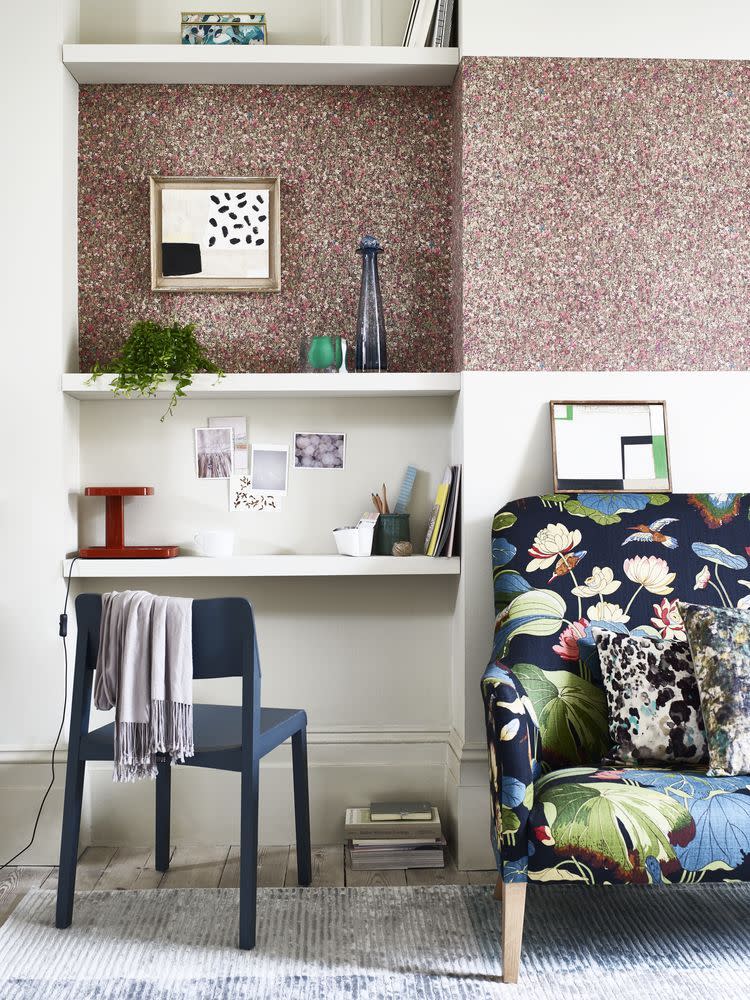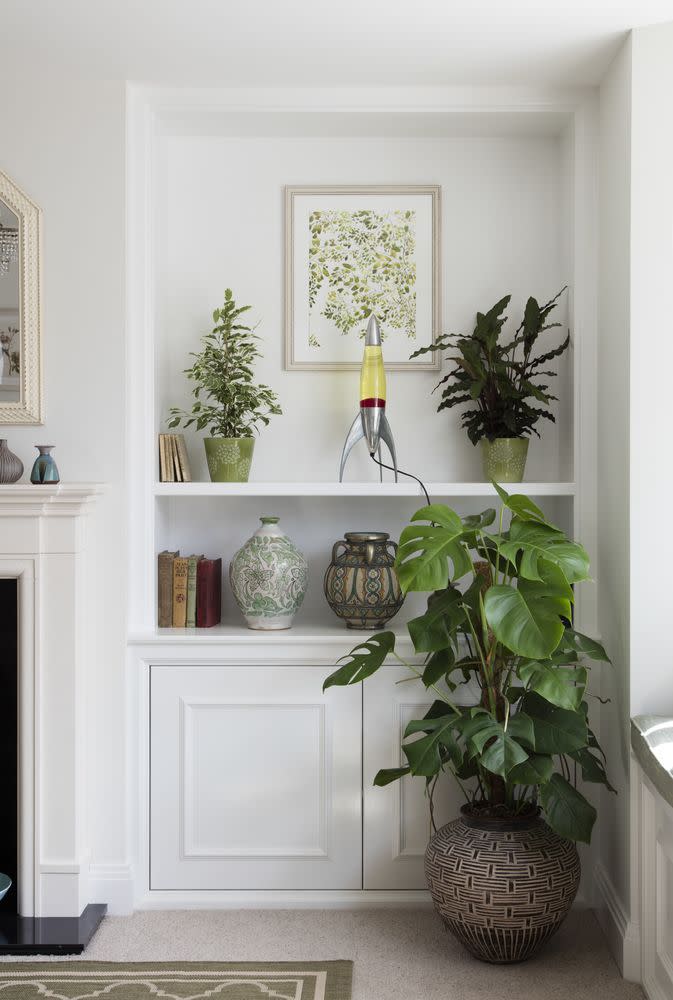7 ways to make the best of an awkward space

Homes come in all shapes, sizes and layouts: from the ultra-functional and meticulously planned to the intriguingly (sometimes, frustratingly) unique. If you have a home with slightly more quirky spaces – or those that are downright awkward – it can be tricky to make rooms feel like they've been used to their full potential.
But fear not, as whether you're challenged with an L-shaped room, a narrow area, or an inconvenient nook, a little ingenuity goes a long way when it comes to making the most of an awkward space or layout.
Keep reading to discover seven expert tips on making your space work for you...
Brightening an awkward space with lighting is an easy way to open it up and make it feel larger than it is. To do so, having plenty of lighting options available to you is essential in making the room's atmosphere fit the space's purpose – no matter the time of day.
Niki Wright, co-founder of lights&lamps, explains: ‘Layering warmer light is a natural way to brighten your living space and help transition the day into the evening.
‘The use of brighter ceiling fittings during the day is often a subtle enhancement to natural daylight. Dimming them down in the evening and complementing them with low level lamps can transform a bright space by day into a cosy living room by night.’
Rooms with an awkward layout or an unusual shape often face the problem of dark corners or dull areas without much access to natural light. The result is a space that feels closed in or dingy – not ideal if you want to make the most of the room.

Identify dark corners and recessed spaces (such as alcoves) and prioritise them for additional lighting.
'The positioning of lighting is key to any scheme,' says Niki. 'There is always a darker, north-facing side to every home and the use of lighting is an easy solution. Illuminating a dull corner with a table or floor lamp or washing a dark wall with a well-placed wall light can make a huge difference to the energy and feel of a room.'
If a room is petite, every inch of space is valuable, so make use of it. This applies not only to the layout of furniture on the floor but the space available to you vertically.
'Generally speaking, in a narrow space, you should make use of the height and wall spaces as much as possible,' says Peter Erlandsson, co-owner at String Furniture.
In ultra-narrow or small rooms, custom-made furniture and built-in solutions will ensure that every little corner and crevice is filled. It also ensures that you don’t miss any valuable vertical space. Think floor-to-ceiling cabinets, bookcases and shelves.
Don't assume that a room has to have one purpose alone – splitting it into set 'zones' can make the most of the space. The largest and brightest part of an open-plan kitchen can be used to house an island or dining table, while a set-back section can be transformed into a small yet inviting reading nook or study space. Furniture, lighting and accessories can all be used to divide the space.
Martin Waller, founder of Andrew Martin, suggests: 'Use statement lighting to create different zones – each with a different purpose. Hang pendant lighting over dining areas and use task lamps in corners of the room to create cosy areas for reading.
'Open furniture, such as cabinets, bookcases, or shelving can be used to create different zones, without making the space feel closed in. Alternatively, a folding screen can provide privacy, something that is often lacking in open plan living.'
Colour and pattern play an important role in creating a sense of personality in your home. However, when dealing with a unique or awkward space, you'll need to consider their use much more carefully.
'When choosing wallpaper, consider the size of a room,' advises Martin. 'Smaller scale patterns work well in big rooms but can overwhelm smaller spaces. Larger scale patterns work well in most rooms but think about lighting, as this can affect the look of wallpaper and make a colour appear lighter or darker.'

Diane Hyde, marketing manager at Craven Dunnill, adds: 'Tiles are beautiful pieces of art on their own and have the power to utterly transform a room. Using tiles as a kitchen splashback is an exquisite way of displaying and accentuating their pattern, texture, and glaze. A beautiful way to bring a burst of colour into a room, highly reflective gloss tiles are also a great way to create a sense of space and openness.'
If there's one thing that makes a space awkward, it's small (and seemingly useless) inlets, nooks and alcoves. These are a pain when decorating and often feel like dead space.
‘If there is a nook, use it. Make awkward corners a point of interest by adding open shelving and filling with books and accessories,' advises Camilla Clarke, creative director of Albion Nord. 'Don't be afraid to use unusual furniture pieces to work in the space. A bookshelf doesn't always have to be a bookshelf, if you are compromised for space use something interesting and unexpected as an alternative.

'You can stack books on a bar cart, on the fireplace mantel or a windowsill. Don't compromise on the scale of your furniture. A small room doesn't mean it needs small furniture. Try not to scale down the furniture, embrace a small sitting room with a large sofa and it becomes much more inviting.'
When it comes to high-traffic areas of the home, like an awkwardly-shaped kitchen, the key is to add solutions that work around your lifestyle and cooking habits. By designing the kitchen to minimise conflict when in use, you’ll get much more enjoyment out of the space.
'Walkway space and the working triangle should be considerations when designing your layout,' says Tom Howley, design director at the eponymous kitchen company. 'Having your hob, sink and refrigerator located equidistant from each other, and optimising your workspace means everything is at arm's reach. If you have a galley kitchen, placing your sink on the opposite side of the cooker will help to avoid conflicts within the space.
‘If you have a small U-shaped kitchen, avoid cramming in too much cabinetry; although you may feel like storage is crucial, entire runs of closed cabinets can enclose the space even more. Utilise corners by including clever pull-out solutions and only use wall cabinets on one side for a spacious feel.'
Follow House Beautiful on TikTok and Instagram.
You Might Also Like



